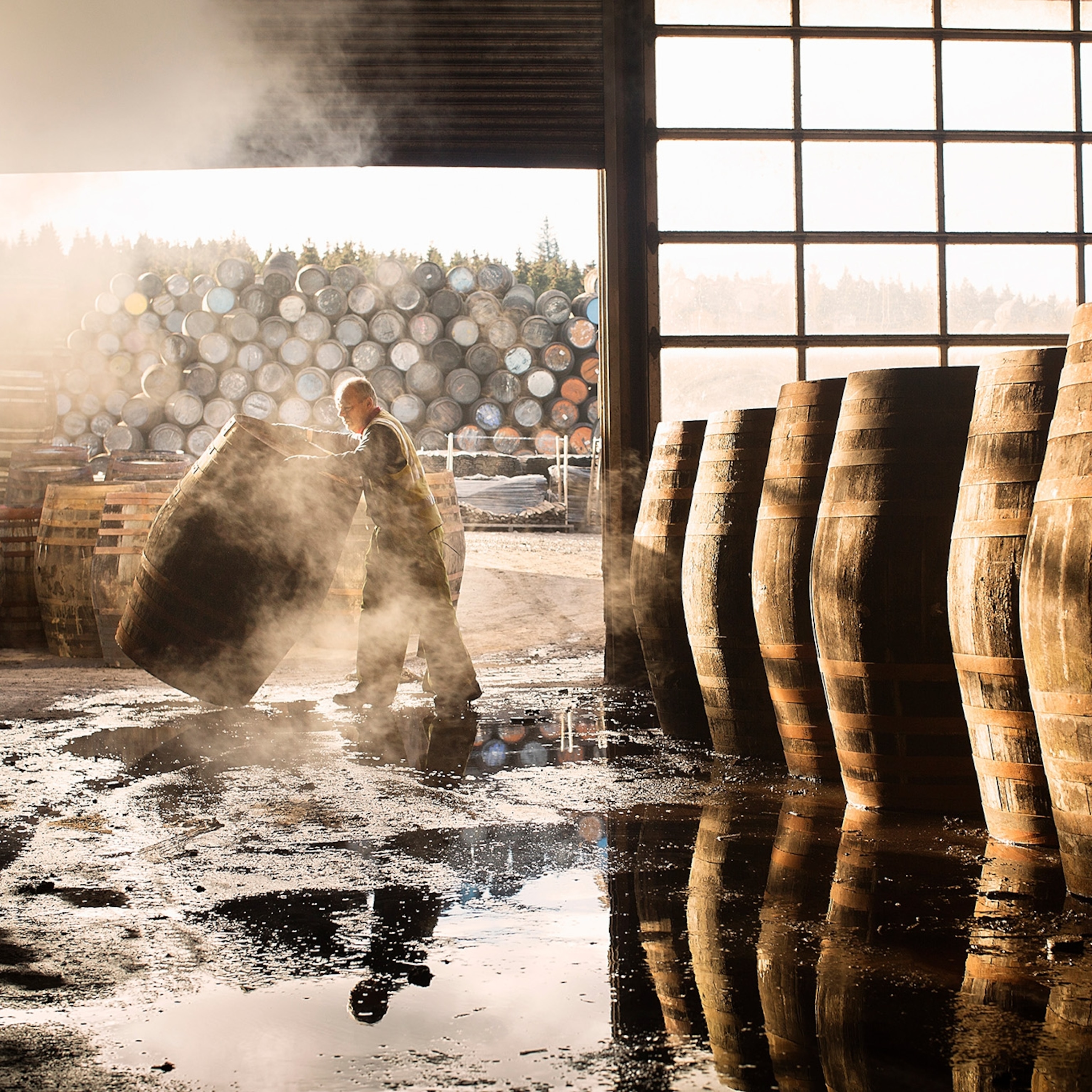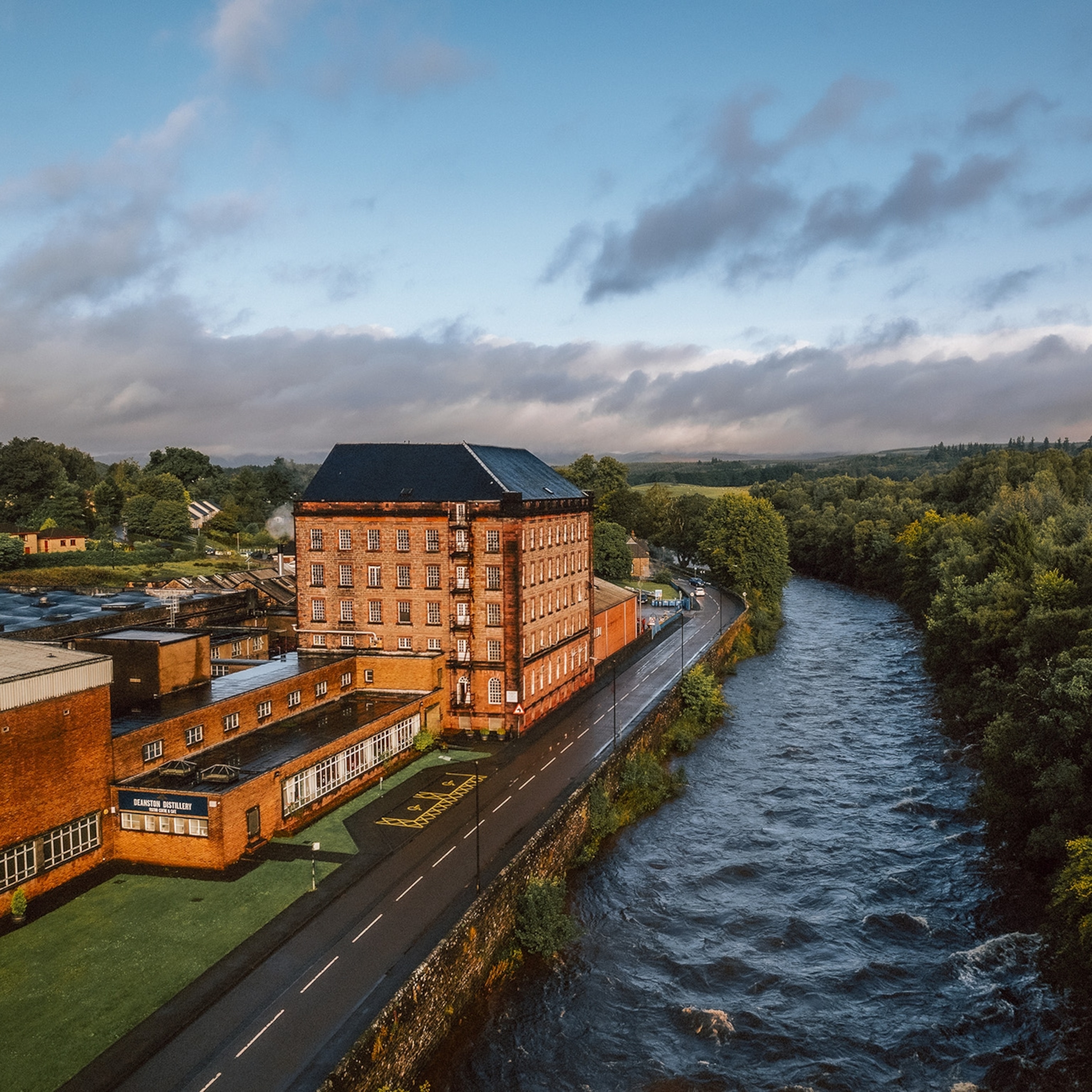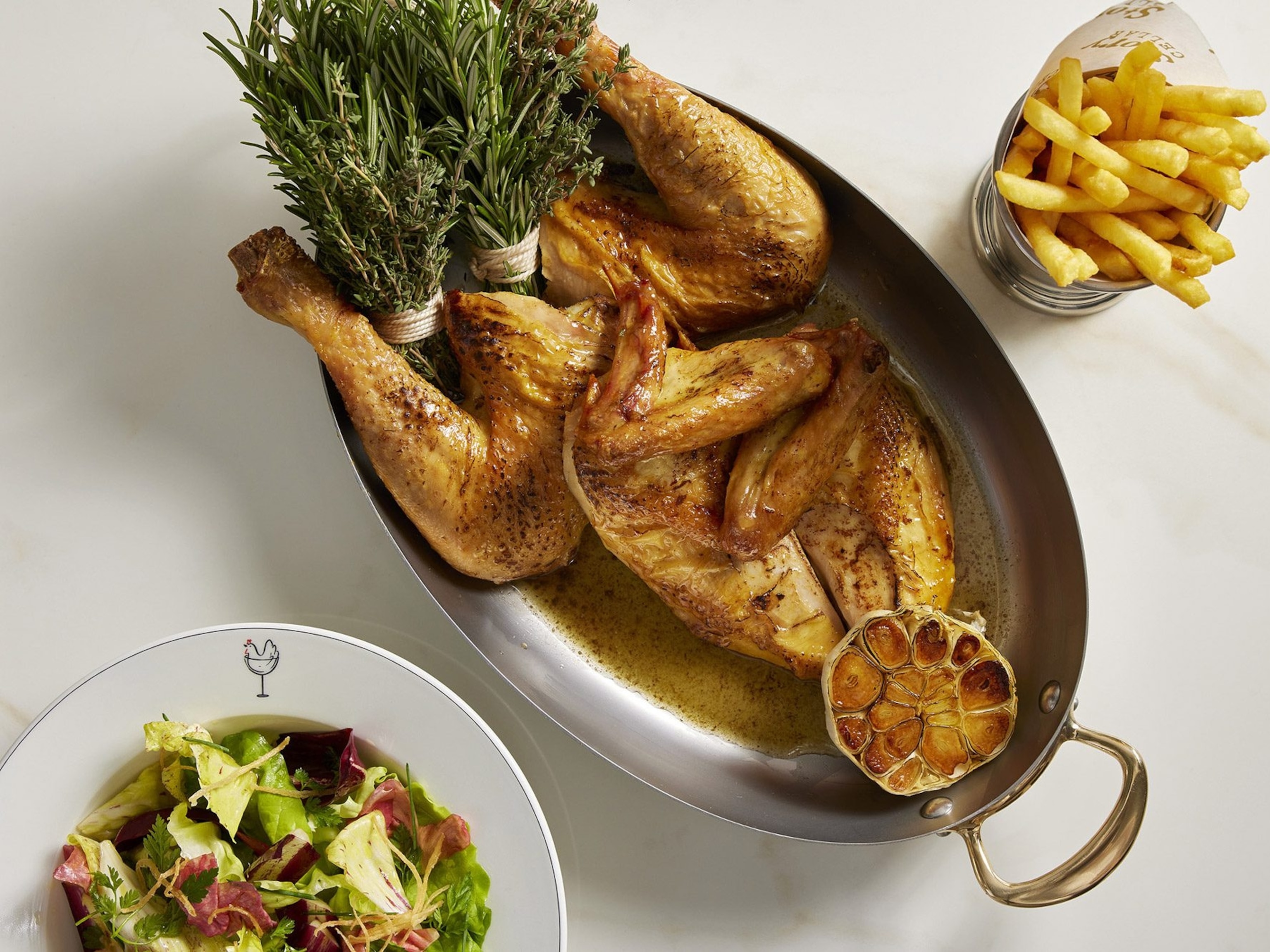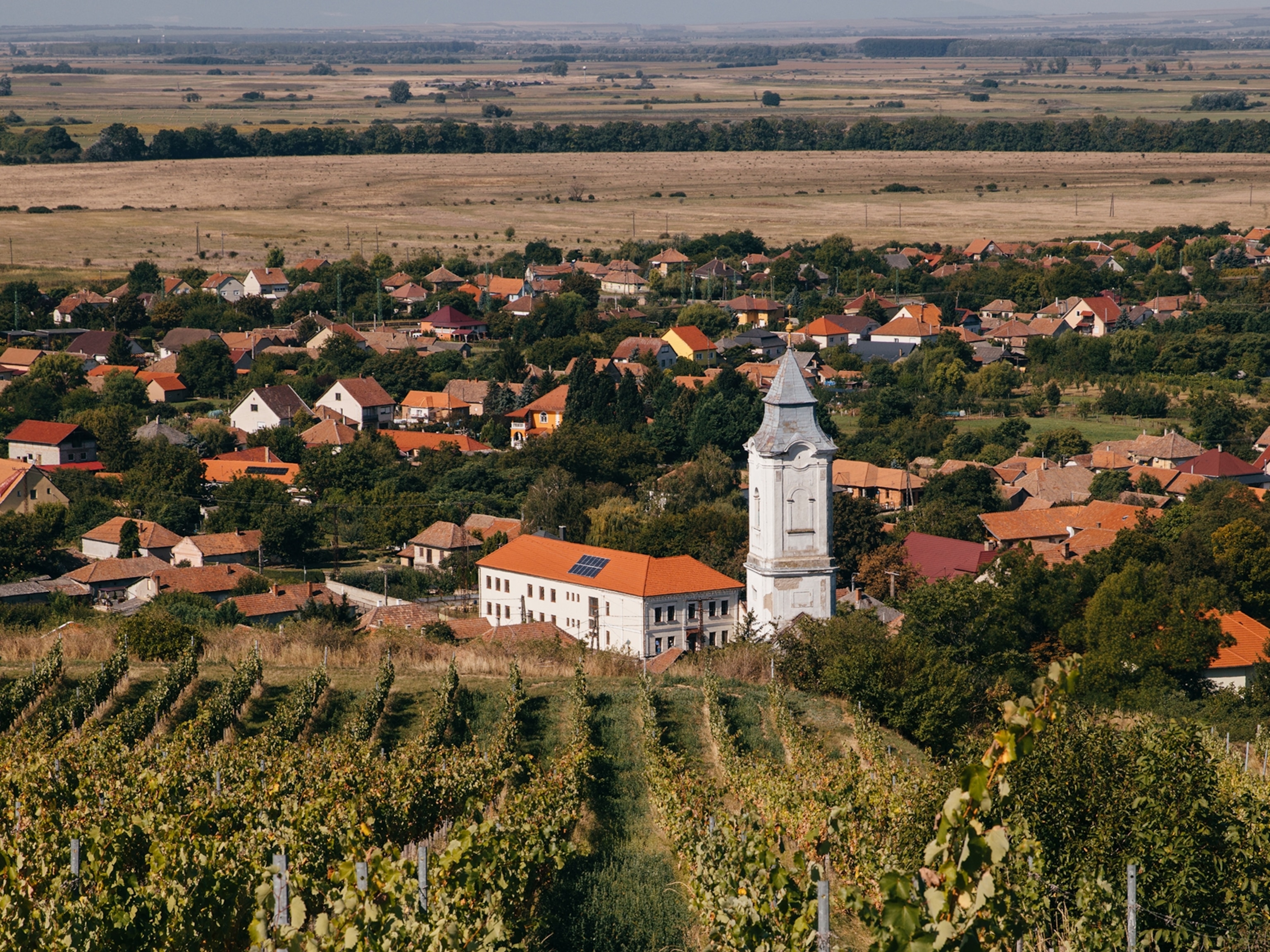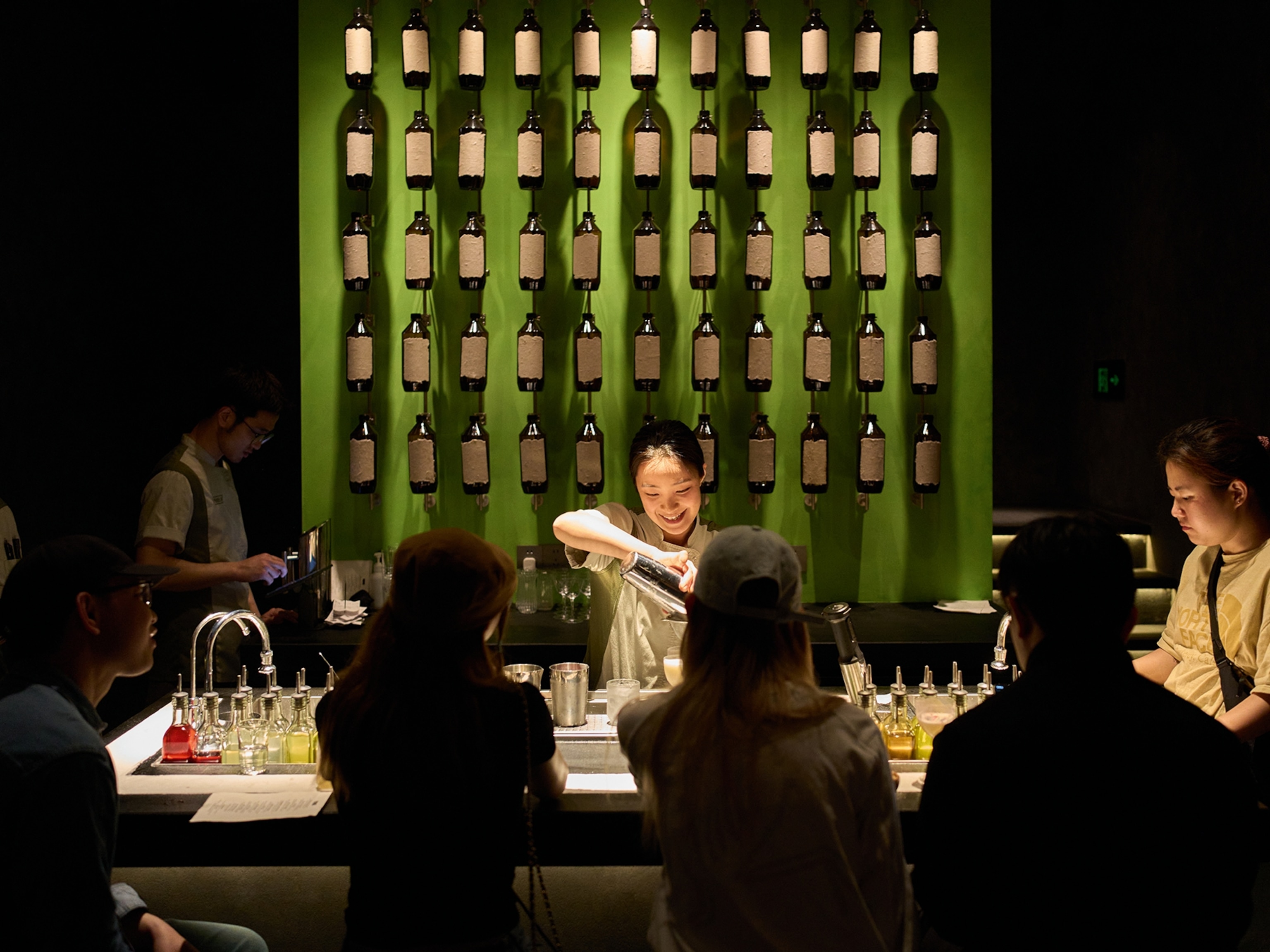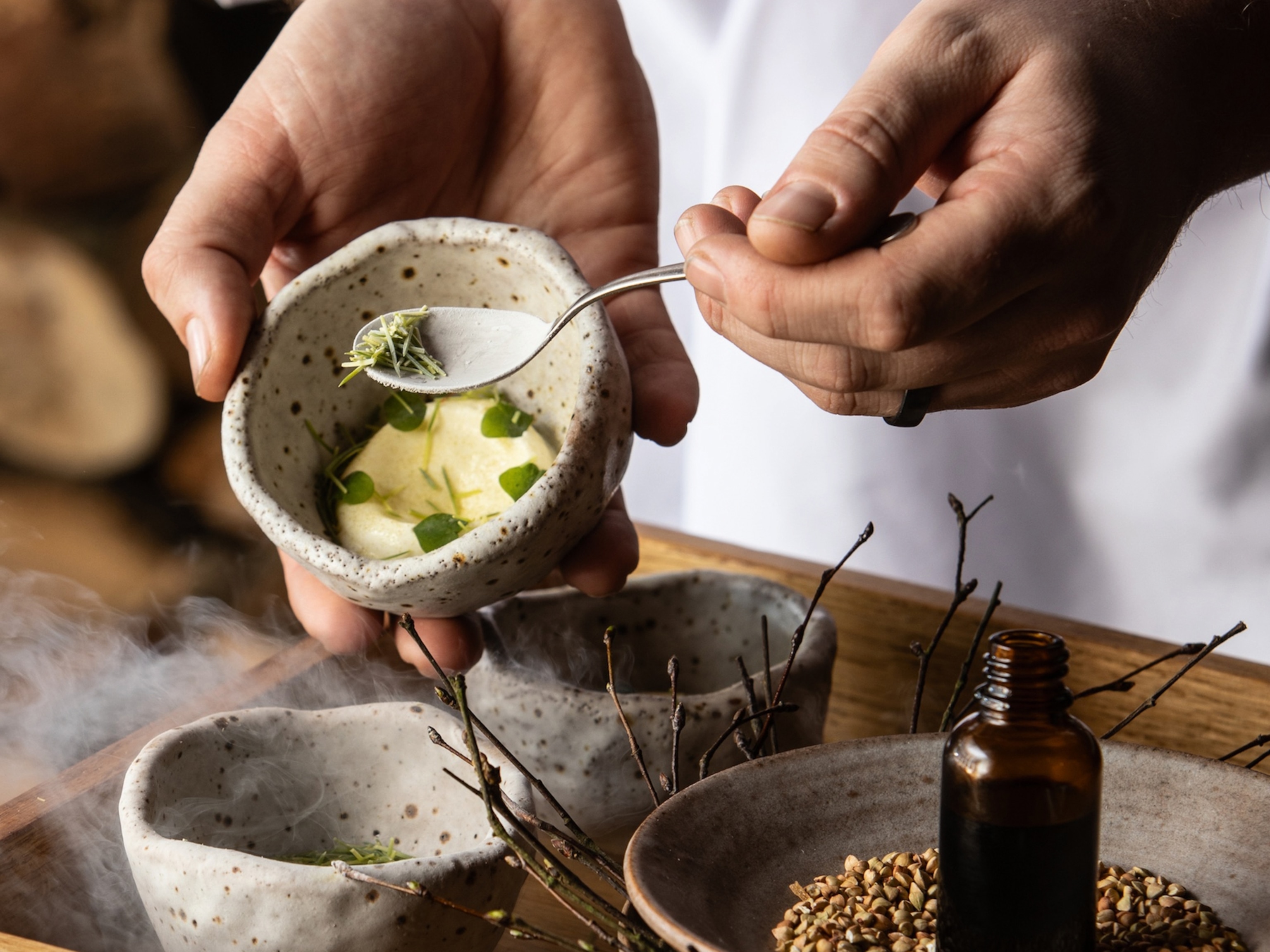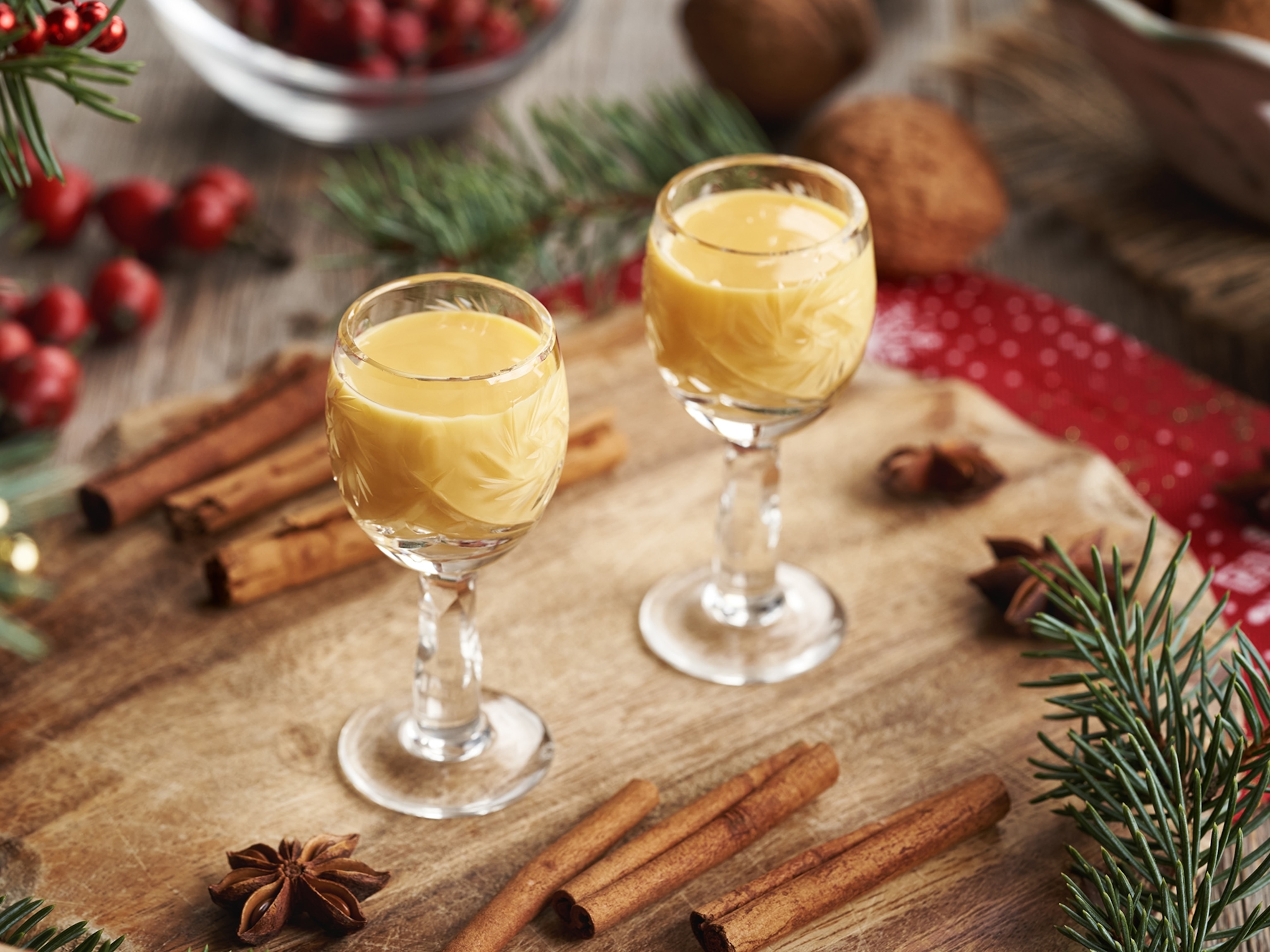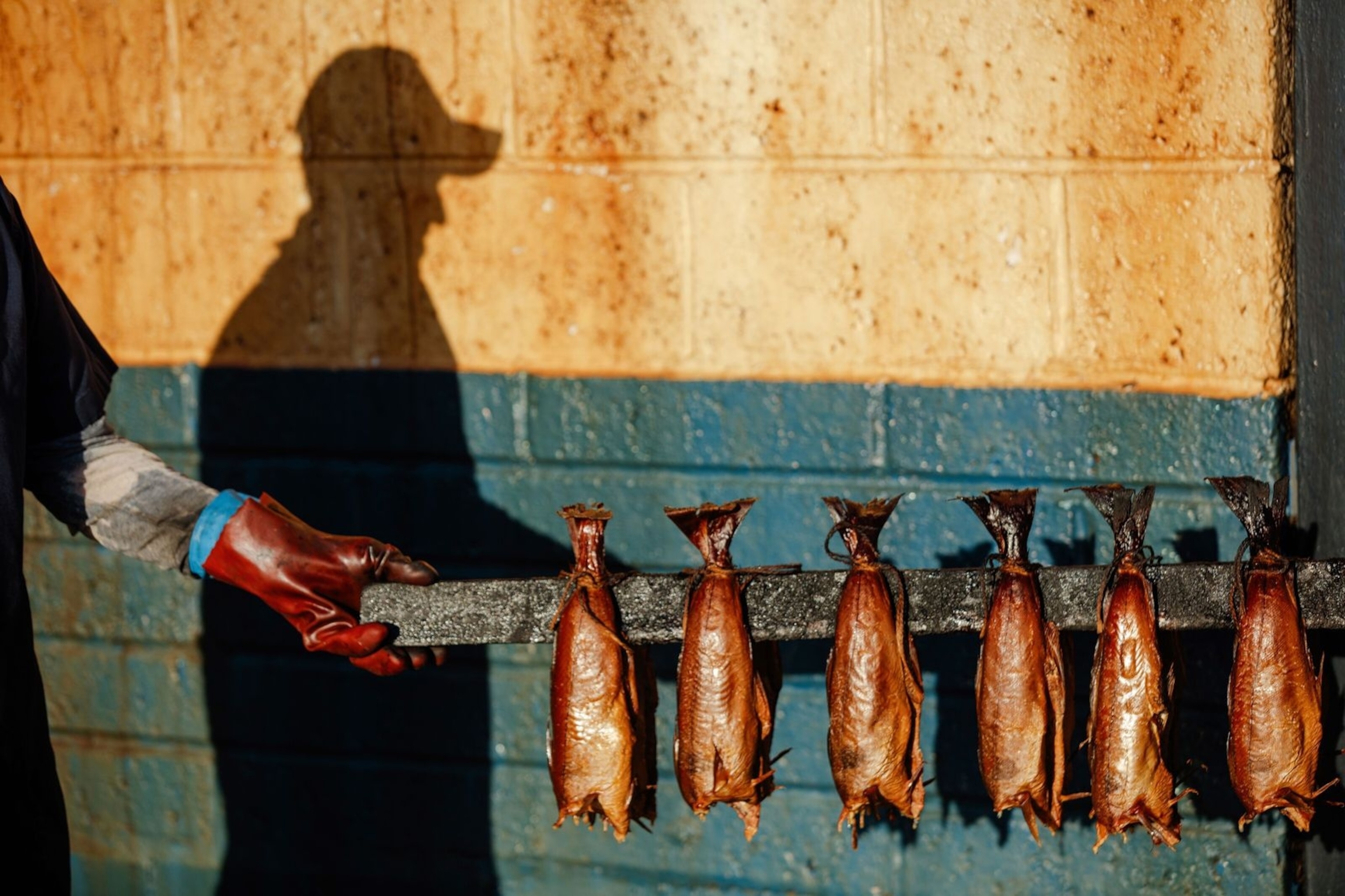
On the trail of Scotland's Arbroath smokies
On the east coast of Scotland, the residents of Arbroath and the neighbouring village of Auchmithie are striving to keep a famous culinary tradition alive — smoking racks of split and salted haddock over hardwood, in the same way they have for centuries.
My eyes sting from the thick, sweet-smelling smoke.
The walls around me are charred black, and dozens of headless silver haddocks hang by their tails from wooden sticks. A man in blue overalls and orange wellies lowers the fish into a wood-fired pit made of bricks. Outside, grey waves crash over the harbour walls, and the wind — expected to reach 50 miles per hour by sunset — howls through the smokehouse chimney.
I’d been told Arbroath, a 12th-century fishing town 16 miles north east of Dundee, was the sunniest place in Scotland. On the train from Edinburgh, passengers spoke of the Scottish port town like it was on the Mediterranean: fresh fish lunches by the marina; Italian ice cream on the beach; smoked haddock pies and quiches on sandstone cliffs, where quiet coves and natural swimming pools turn Caribbean blue in the summer. But when I arrive, the November wind is strong enough to knock me over and break my umbrella in half. Ice cream and sea swims seem unlikely.
Instead, I follow the smell of smoked fish to the Fit o’ the Toon, the part of Arbroath where the Brothock Burn river meets the sea. Meaning ‘lower end of town’ in Scots, this is where the famed Arbroath smokie — split and salted haddock hot-smoked over a hardwood fire — is made. Yet, despite the name, this speciality was actually born three miles north of Arbroath, in the town of Auchmithie. The switch to Arbroath came in 1705, when villagers first began moving to the Fit o’ the Toon for the promise of a better harbour. As well as saving Abroath’s dying fishing industry, Auchmithie fisher folk introduced the art of smoking haddock over a wooden barrel, using hessian sacks from Dundee’s jute mills to trap the heat. Today, family-run smokehouses in the Fit o’ the Toon continue lighting hardwood fires for a smoked fish recipe that’s changed very little since the 18th century.
I spot smoke coming from Arbroath Fisheries — my destination — as I cross the harbour, where grounded fishing boats wait out the storm. On land, starlings are sheltering beneath barnacled crab pots and tangled fishing nets. The smell of rotting seaweed follows me until I reach the small yellow building, where a pair of iron smokies nailed to the wall confirm I’m at the right place. I’m greeted by fishmonger Colin, who’s covering the haddock he’d placed inside the firepit — or barrel, as he calls it — with a lid in order to kill the flames. He adds hessian sacks and dampens them with a hose, engulfing the two of us in fresh smoke. “The hessian helps the fire breathe,” says Colin. “The water stops the hessian from catching fire.”
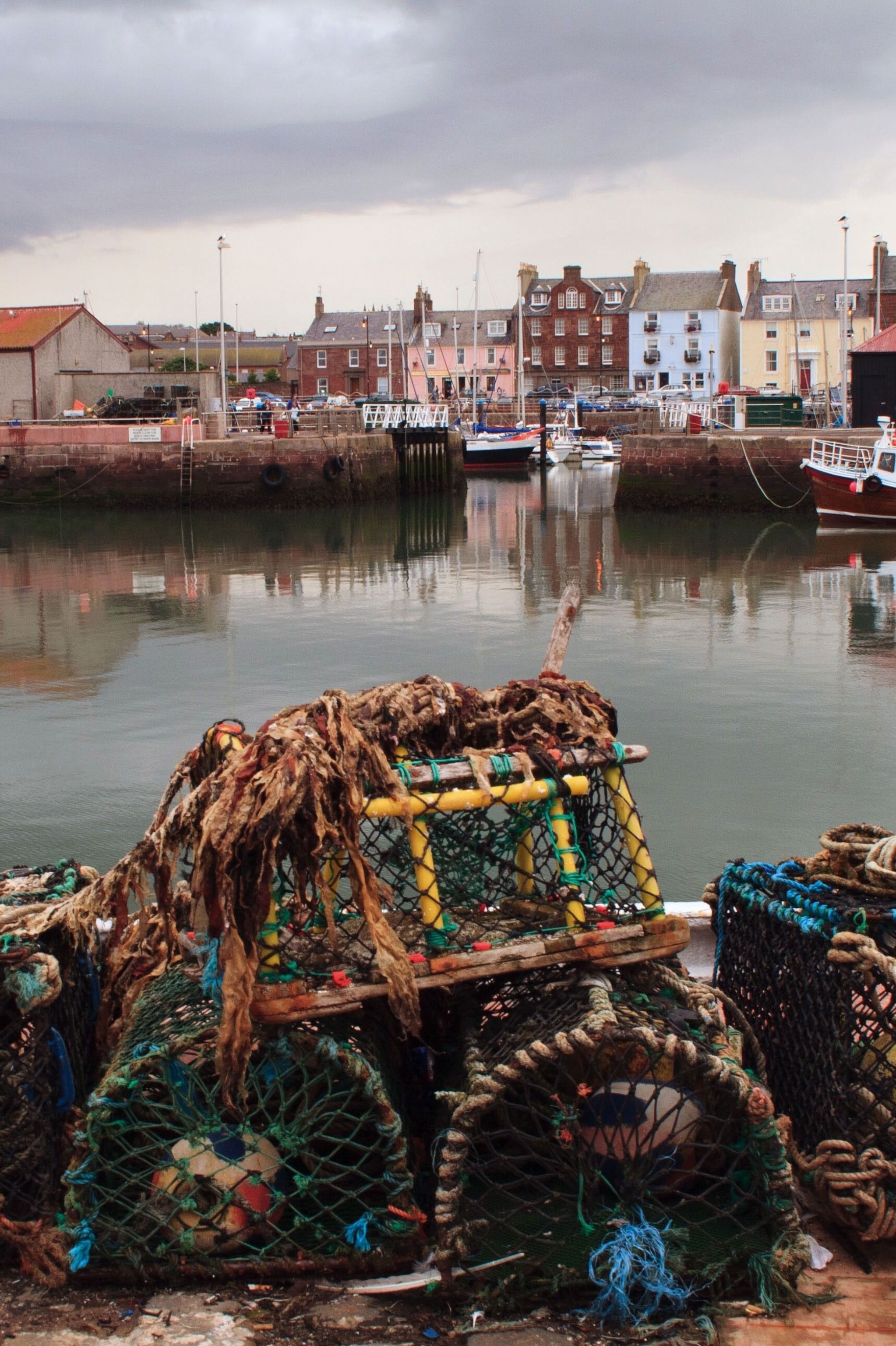
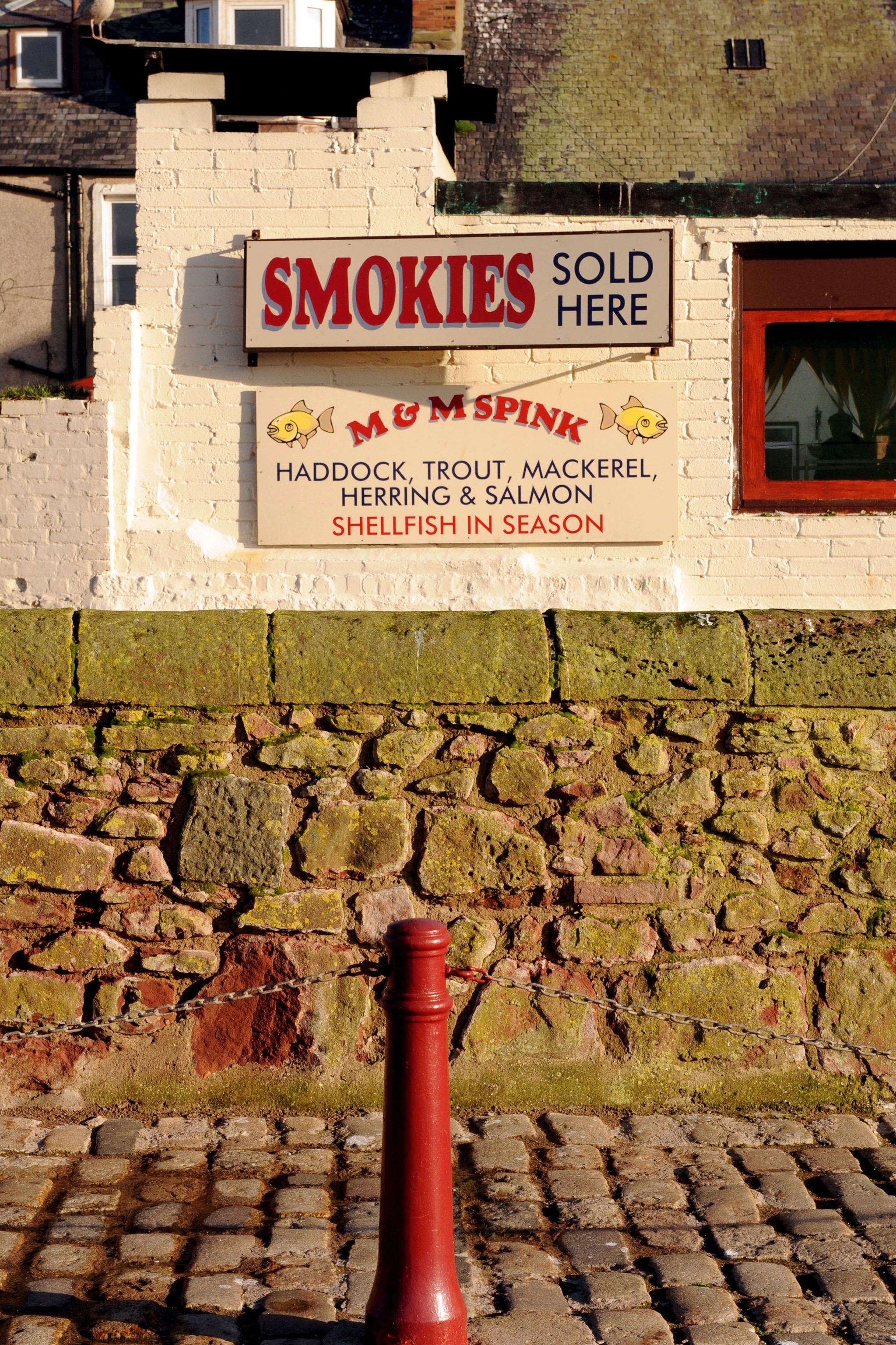
While we wait for the smokies to cook, Colin prepares more haddock for the smoker. He cleans the salt, which was added the night before, and the excess blood off the already gutted and headed fish in cold water. He then ties similar-sized haddocks in pairs by the tail using local jute string — once a byproduct of Dundee’s 18th-century jute mills — before tying them to a long, triangular wooden stick to dry. He takes great care over this last step, as if he were tying shoelaces made of glass. “This part is very important,” he says without looking up. “If the fish aren’t tied properly, they can fall into the fire and burn — that’s a lot of money to lose.”
His colleague Elaine is mixing mayonnaise and mustard for a smokie pâté, sold in the adjoining deli alongside smokie quiches and hot-smoked salmon. “The salt adds flavour and toughens the skin for the fire,” says Elaine, who has worked at Arbroath Fisheries for 17 years. “Smokies are our biggest seller — even the celebrities love them. Did you know we had the TV presenter Kaye Adams here?”
In its heyday, Arbroath was one of Scotland’s busier fishing ports, with more than 40 boats landing whitefish and shellfish by the late 19th century. But overfishing led to fishing quota cuts starting in the 1970s, which caused Arbroath’s fishing industry to decline. Today, its harbour has a small creel fleet that brings in modest amounts of lobster, crab and prawns, but the last boat to land haddock or cod — once Arbroath’s star catch — stopped sailing in 2013. Today, most Arbroath smokies are made with haddock landed 90 miles north of here, in Peterhead, one of the UK’s largest fishing ports.
Twenty minutes later, it’s time to check on the smokies. Colin removes the hessian and lifts the lid, revealing plump haddock fillets turning copper-yellow. “You know a smokie is ready if the skin is golden and the flesh is white,” he says, examining the fish through the cloud of smoke. He’s close enough to the flames for rising embers to land on his collar. “As a smoker, you have to use your instinct,” he adds, closing the lid again. “The trick is to have the fire hot enough so the fish is cooked, but not so hot that it dries out or burns. The weather and the dryness of the wood affect how long it takes to cook, too. I’ve burnt a few smokies in my time; it’s not an easy job.”
Another half an hour and the smokies are ready. Elaine hands me a whole split haddock, the fish still hot enough to warm my palm. Its golden scales glow in the white light of the smokehouse, like a sunset on water. “Straight off the barrel,” says Elaine. “Nothing beats it.”
The flesh, cream-white and velvety smooth to the touch, comes away from the skin like butter. Steam rises from the flakes between my fingers, filling the air with toasted oak and sea salt. I expect it to be overpoweringly fishy, like the kipper sandwiches on Brighton Beach or the yellow-tinged haddock my grandad used to eat for his Friday tea. But the flavours are surprisingly delicate: there’s the warmth of smoked oak and birch, followed by a touch of salt and the sweetness of the haddock. The texture is smooth and buttery, the flavour punchy yet subtle. The rumours are true: Arbroath smokies are pretty damn good.
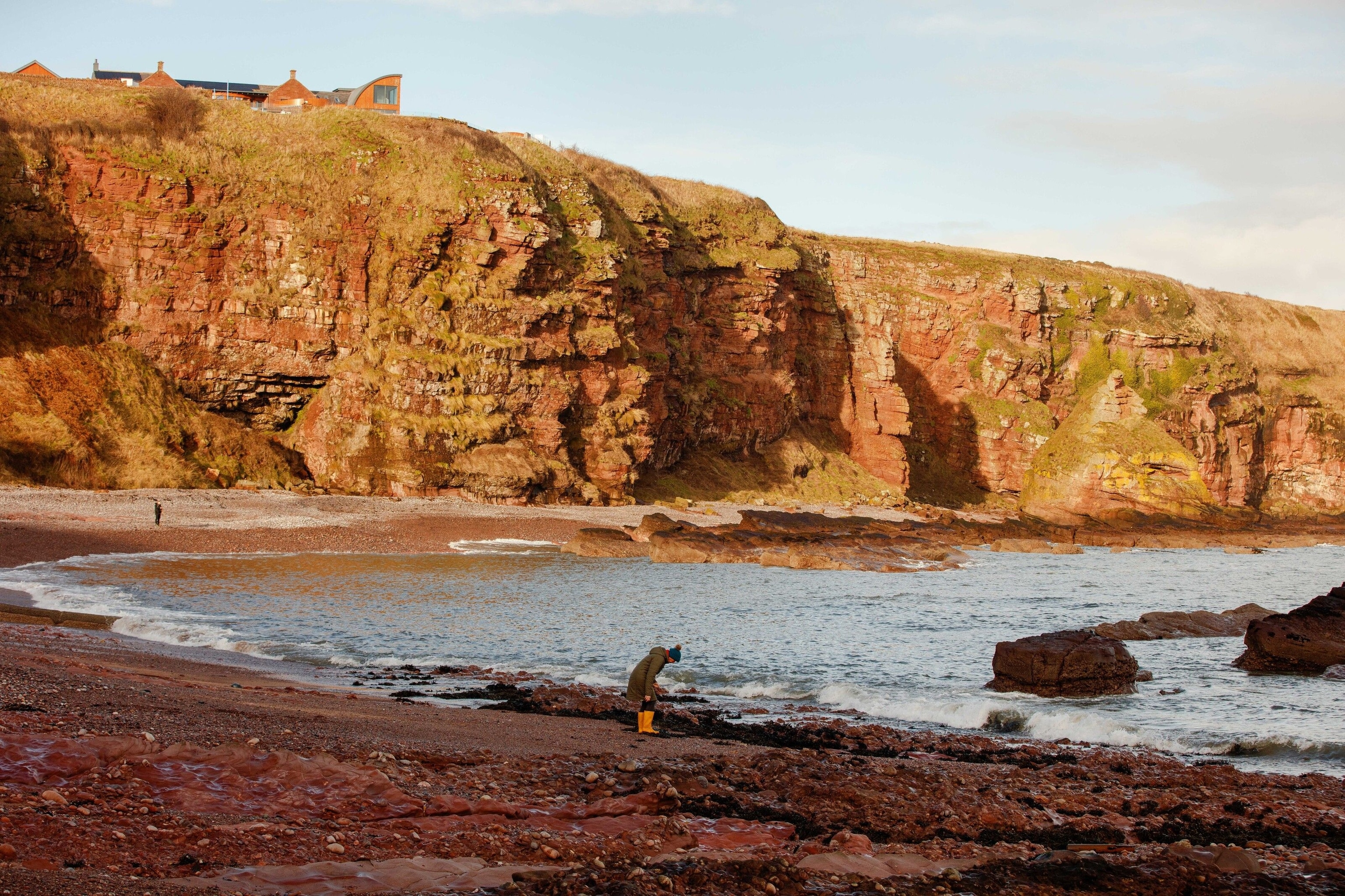
The rules of the game
With the scent of smoked fish lingering on my clothes, I walk the 200 feet to the next smokehouse, Alex Spink & Sons, where I’ve arranged to meet Iain R Spink (no relation), an independent fifth-generation producer who prepares his famed wood barrel smokies here for markets and events. It was a proposal to the European Commission from Iain’s father, Bob Spink, that lead to smokies gaining Protected Geographical Indication (PGI) status in 2004.
As a result, genuine Arbroath smokies must these days be prepared within five miles of the Arbroath Town House, a radius that extends from West Mains, to the north of Arbroath, to East Haven, in the south. They must also be prepared using haddock sourced from vessels landing at designated Scottish fish markets and follow traditional production methods, which include heading the fish by hand, tying them in pairs by the tail using locally made jute string and smoking them over a hardwood firepit.
Sharing his father’s passion, Iain has spent 20 years preparing Arbroath smokies at farmers’ markets and events like Highland games and the Dundee Flower & Food Festival. Instead of the above-ground brick pits used in smokehouses, Iain smokes haddock over wood barrels dug into the ground and only uses dampened hessian sacks (no lid) to maintain the temperature. This technique mimics the 18th-century smoking method and it’s an approach that has garnered Iain attention from chefs like Jamie Oliver and Gordon Ramsay.
“I wanted to educate people,” says Iain, who smoked his first haddock at the age of 16. “Most people’s experience of a smokie is of it wrapped in plastic in a fish shop. I knew that for smokies to be recognised globally, people needed to taste them straight from the barrel.”
Sharing the history of the Arbroath smokie is important to him, too. “We’ve been telling the same old story for years,” he says, referring to the smokie legend of a house burning down in Auchmithie. The story goes that, after a fire, the haddock hanging up to dry in the house were found cooked in the ashes, and so the smokie was born. “That’s rubbish of course,” says Iain. “The smoking method was brought over from Scandinavia during the Viking raids in the 11th century. Spink is a Norse name.”
Despite his success, Iain is worried about the future of the Arbroath smokie. “In the 1970s, every house in the Fit o’ the Toon was smoking fish,” he says. “Now, there are maybe 12 or 13 fish merchants left in Arbroath doing smokies. Fish supply is a problem, too. The landing of fish here is much smaller than it used to be and is often unreliable.”
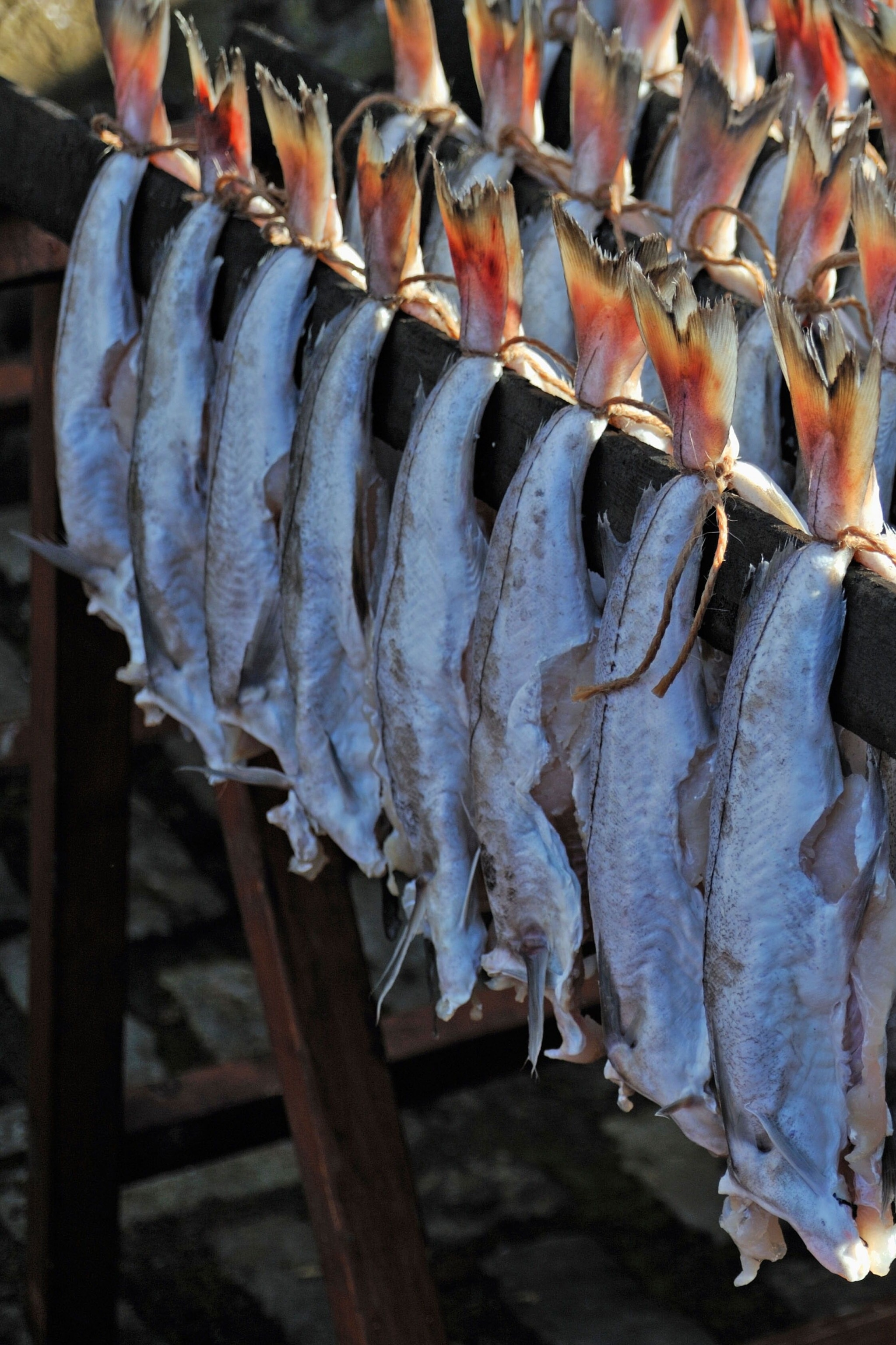

In the evening, I travel to Inverkeilor, a 10-minute drive north of Arbroath, to eat at Gordon’s Restaurant, run by mother and son Maria and Garry Watson. Located on the lower floor of the family’s Victorian house, it feels like someone’s living room: there’s a stone fireplace stacked with books, and the chairs and curtains share a grey-and-aubergine tartan design. The nine-course tasting menu starts with a spiced parsnip velouté with flaked Arbroath smokie and a poached quail’s egg, alongside homemade milk bread and Blackthorn salted butter. I smell that distinctive smokiness — the smell of the Fit o’ the Toon — before Maria puts the plate in front of me.
“Smokies are brilliant,” says Garry. A passionate advocate for the local speciality, his daily changing menu features dishes like smokie cheesecake with an oatmeal base, smokie and halibut risotto and smokie fishcakes with a runny egg centre. “As a chef, the only thing you can do wrong with a smokie is to be too fussy,” he adds. “It speaks for itself.”
When I ask why smokies haven’t received the same global recognition as other PGI products like parmesan cheese or Ibérico ham, Garry suggests Scotland lags behind other countries when it comes to celebrating its own products. “I think Scottish produce is the best in the world,” he says, setting down a pan-fried North Sea cod with a Shetland mussel fricassee. “The problem is that a lot of our ingredients still go abroad because of higher demand. That’s why I do what I do at Gordon’s Restaurant — I want the Scottish to want to eat Scottish produce.”
The next morning, the wind has eased and the sun is shining. I walk the Arbroath Smokie Trail, a three-mile route from Arbroath to Auchmithie that traces the history of the dish. First stop is the Signal Tower Museum, set in a lighthouse dating back to 1813, which focuses on Arbroath’s maritime and fishing history. Next, I wander past the harbour and smoking chimneys of the Fit o’ the Toon, where women used to wash their clothes and gut fish. I pick up a smokie pie for breakfast and climb the Arbroath cliffs, where windswept ferns are sprouting yellow wildflowers and sea foam catches on the swaying grass like wool. Below me, a group in wetsuits and helmets jump into the swell from a rock shaped like a human face.
In Auchmithie, a cluster of white cottages perched atop a red sandstone cliff, I’ve booked a table for lunch at the village’s only restaurant, The But’n’Ben. I order the signature dish: a smokie pancake topped with a creamy white sauce laced with lemon zest and parsley, a recipe that founder Margaret Horn created more than 40 years ago to promote smokies in the area. “When I first opened the restaurant, no one was using smokies on their menus,” says Margaret, who’s also a member of the Heritage Arts Auchmithie Residents (HAAR), a community group dedicated to promoting Auchmithie’s lost fishing heritage. “When I was growing up in Auchmithie, everyone smoked fish in their garden. Now no one does. Without smokies, we’re just like any other village. I wanted Auchmithie’s fishing history to be remembered.”
I make my way back to Arbroath as the winter sun dips below the horizon. In that moment, the North Sea turning a sunset pink and sandstone red, I remember what Margaret had said to me just before leaving Auchmithie: “Beautiful surroundings aren’t enough for a village to survive — a village needs history.”
With fewer fishermen and producers, it’s impossible to know the future of Arbroath smokies, or what Arbroath and Auchmithie would be without them. But given the determination of the people I’ve met to celebrate this heritage, I have hope this slice of Angus coastline will be known for its smoked fish for many generations to come.
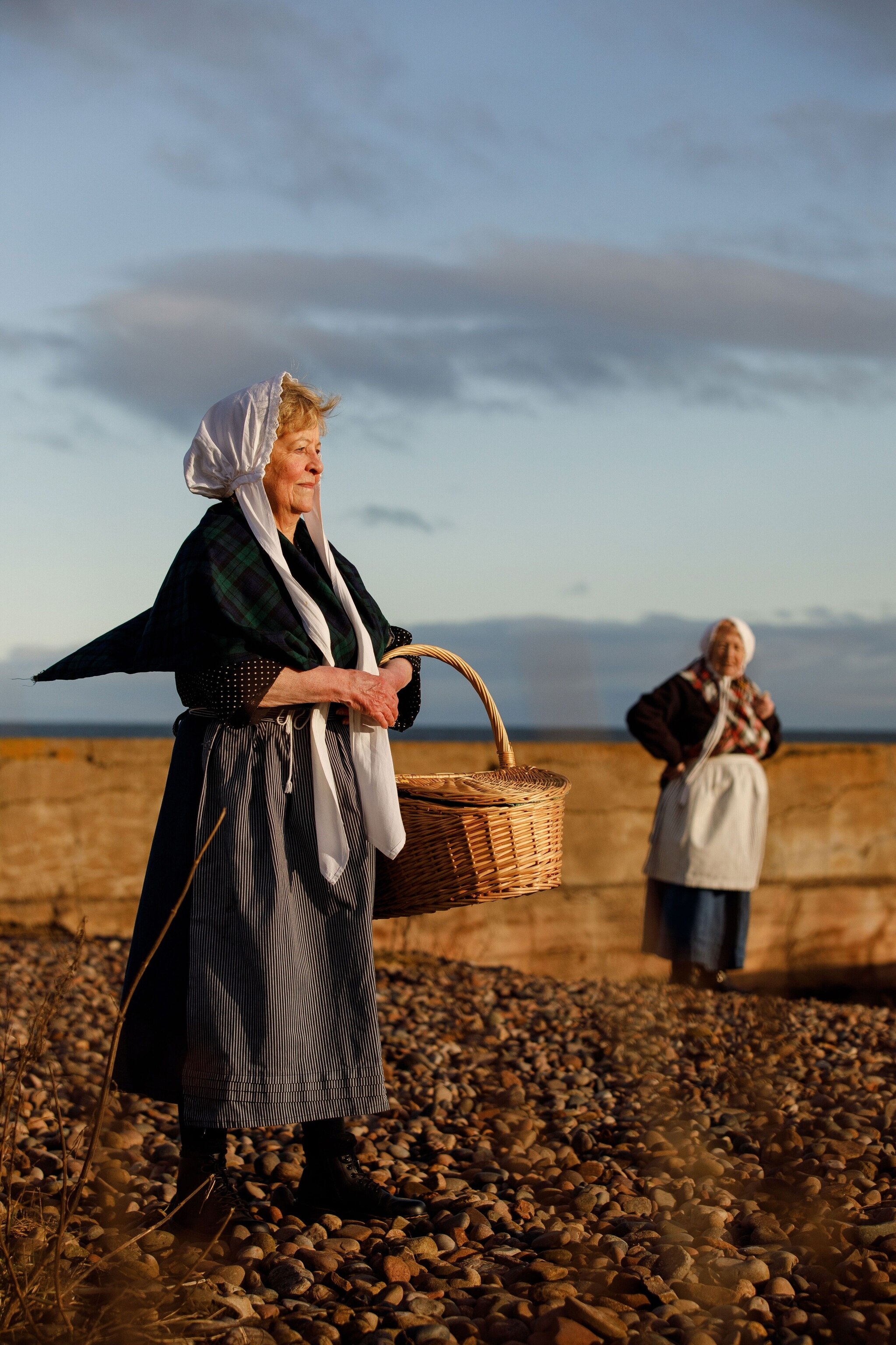
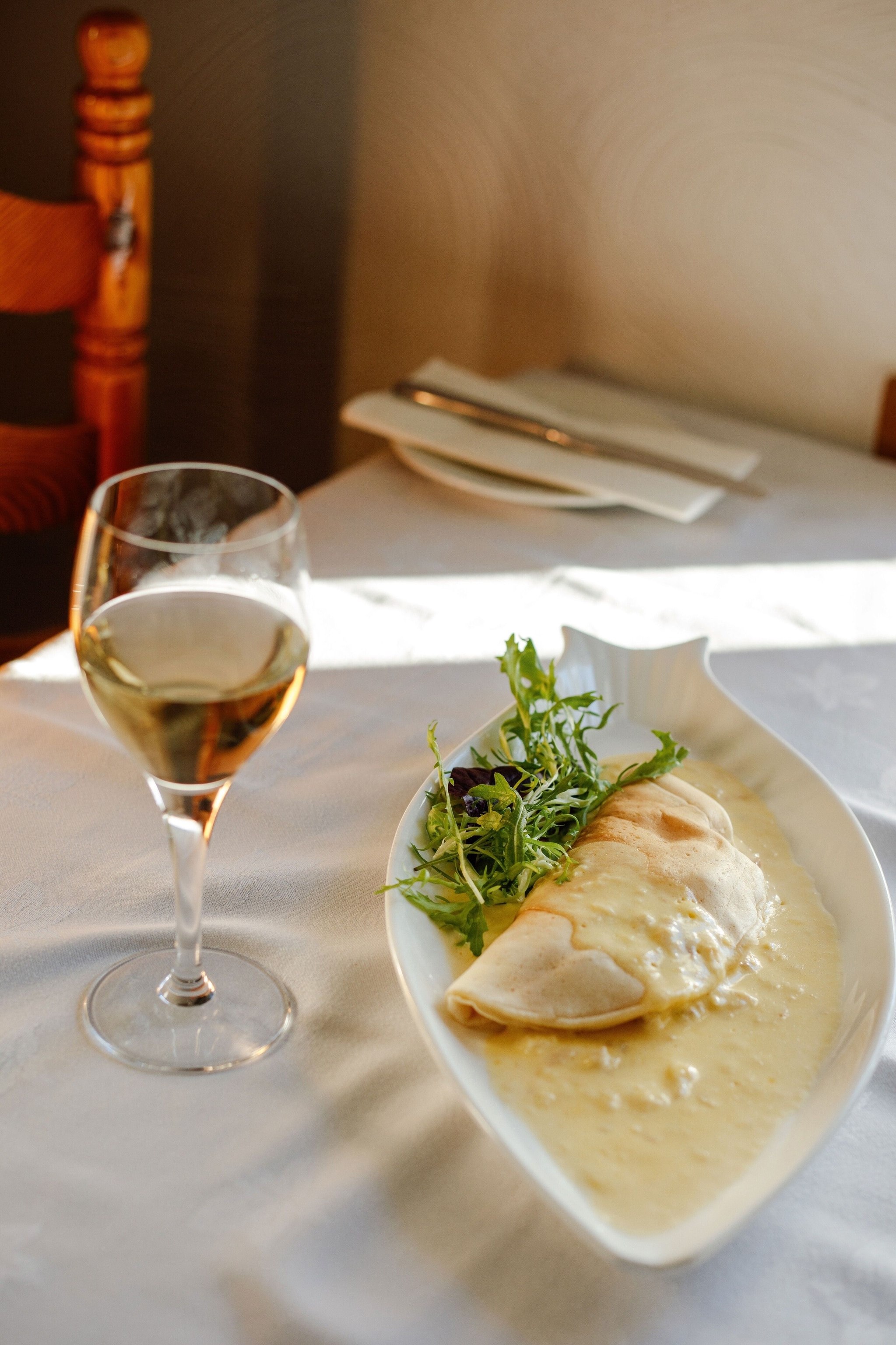
How to make it: Arbroath smokie quiche recipe
Serves: 6
Takes: 1 hr 20 mins
Ingredients
250g shortcrust pastry
flour, for dusting
1 pair of Arbroath smokies,
boned and flaked
80g parma ham, torn into chunks
2 tbsp thyme, finely chopped
150ml whole milk
150ml single cream
1 lemon, finely zested
3 medium eggs
40g Scottish mature cheddar, grated
Method
1 Heat oven to 200C, 180C fan, gas 6. Roll out the pastry on a lightly floured surface, then use all the pastry to line a 23cm loose-base tart tin with a 4cm depth. Trim any excess pastry and discard.
2 Line the pastry with greaseproof paper, fill with baking beans and bake blind for 15 mins.
3 Remove the greaseproof paper and baking beans and bake the pastry case for a further 5 mins, then reduce heat to 180C, 160C fan, gas 4.
4 Scatter the flaked Arbroath smokies and three-quarters of the parma ham into the pastry case and sprinkle with the thyme.
5 Beat together the milk, cream, lemon zest, eggs and a pinch of freshly ground black pepper and pour into the pastry case, then scatter the cheddar and remaining parma ham on top. Bake in the oven for 40 mins until golden and set.
From The Arbroath Smokie Bible by Iain R Spink.
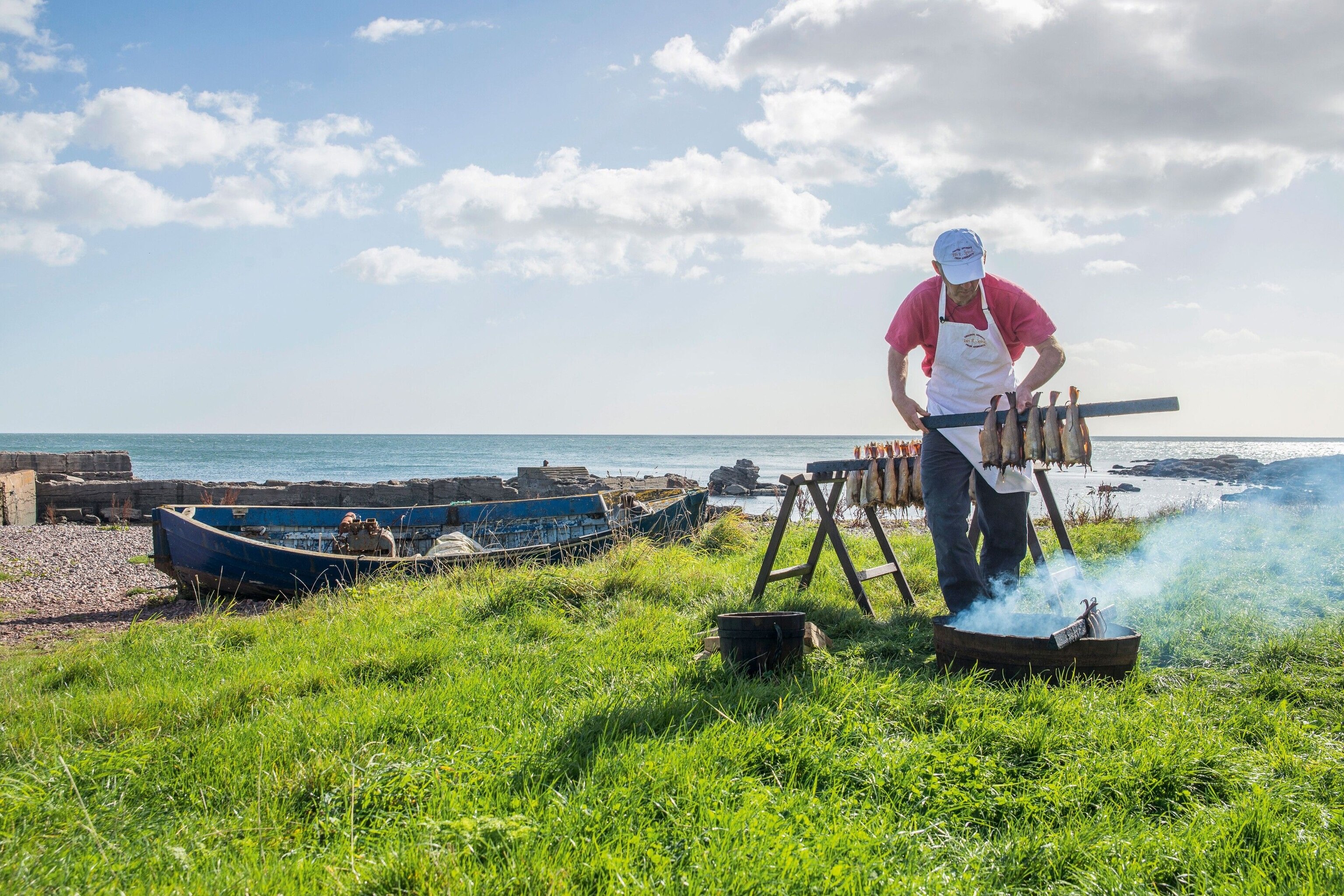
Top four dishes to try in Arbroath
1. Hot-smoked salmon
Arbroath may be famed for its smokies, but the hot-smoked salmon that’s prepared over the same oak and birch fires deserves just as much attention. Try it hot off the barrel if you can, or opt for a hot-smoked salmon pâté at one of the fishmonger delis in the Fit o’ the Toon.
2. Cullen skink
Originally hailing from the town of Cullen, in Moray, this thick soup is traditionally prepared with a cold-smoked haddock known as Finnan haddie. Arbroath’s version uses hot-smoked Arbroath smokies and Angus potatoes, giving it a distinct local flavour. For the best in town, head to The Old Brewhouse, one of Arbroath’s oldest pubs.
3. Arbroath lobster
Head to The Old Boatyard, an award-winning seafood restaurant overlooking the harbour, and start with a creamy Arbroath lobster bisque followed by a whole grilled or poached lobster with garlic or brandy sauce. Arbroath’s crab and prawns, also regularly on the menu, are worth a try, too.
4. Angus berries
Located in the driest and sunniest part of Scotland, Arbroath and the surrounding Angus countryside is Britain’s fruit-growing country. In the summer months, take your pick from fresh strawberries, raspberries, blueberries, blackberries, cherries and tayberries — a combination of a blackberry and a raspberry named after the nearby River Tay. Locally made fruit jams and chutneys can be found in Arbroath’s delis and bakeries year-round.
Essentials
Getting there & around
LNER has direct trains from London King’s Cross to Arbroath, starting at £42.10. Tickets can also be booked through Trainline.
Where to stay
Brucefield Boutique B&B offers five en suite bedrooms in a 1920s manor house. Doubles from £130, B&B.
More info
visitangus.com
visitscotland.com
Sign up to our newsletter and follow us on social media:
Facebook | Instagram | Twitter
